Zalando’s Returns Strategy: A Model for Smarter, Preventative Returns
For some online retailers, over a third of what they sell is sent back at a huge cost, this was one of many research findings from our true cost of returns research project. Click here.
The report also included recommendations around leadership, data systems, returns prevention strategies, approaches to lowering the costs, both financial and environmental.
As the time when we undertook our research, Zalando was consistently called out as a retailer with a reputation for thinking differently about returns.
This article summarises what we know about their approach, which is grounded on a superb paper published in the California Management Review (click here) written by two academics at WHU, Felix Johannes Röllecke and Arnd Huchzermeier, along with David Schröder who at that time (2017) was the Senior Vice President of Convenience, he is now, Co-CEO, at Zalando.
These learnings augment our own research and are summarised below, along with a five point checklist to benchmark your own business's approach to returns - the Zalando way.
The very first thing to call out is that Zalando treats returns not as an unavoidable cost, but as a data opportunity. They flip the traditional way of thinking, viewing returns as a strategic lever to boost customer satisfaction and lifetime loyalty, not just as a problem to minimise. As they say, happy customers come back! Their approach combines prevention, customer convenience, and intelligent systems.
Second, they aim to prevent returns through better decisions upfront
- They use very high-quality images and videos to show products from multiple angles and in motion, helping customers understand fit and fabric.
- They leverage "Fit Prediction" tools using machine learning to suggest the right size based on a shopper’s past orders and returns — for example, advising a customer that they have returned items like this previously.
- They then add rich customer reviews to highlight fit, feel, and fabric, guiding buyers to make more confident choices.
Third, they aspire and seek to deliver a frictionless returns experience
- Zalando’s free, rapid and easy returns processes are central to its brand promise. Pre-paid labels, quick refunds, and app-based returns create trust and loyalty, encouraging customers to keep buying. Returns are seen as part of their great customer service, not a punishment for their shoppers.
- This convenience has helped Zalando build a powerful data set on return reasons, product performance, and customer behaviour.
Fourth, they create data-driven prevention and feedback loops
- The company analyses return data by product, brand, size, and customer segment to identify patterns and feed them back into product design, supplier selection, and customer guidance.
- If a product has a high return rate, Zalando works with suppliers to fix issues with fit, photography, or descriptions.
Fifth, they leverage technology and add AI integration
- Their recommendation and sizing algorithms draw from millions of purchase and return interactions to constantly improve accuracy.
- Real-time dashboards track returns by SKU and region, giving early warnings about products likely to cause dissatisfaction.
Their mindset is that every return teaches them something, and to enable and constantly improve their strategy they empower their teams to propose and test new ideas.
With the circular economy in mind, they look to turn product returns that they cannot resell or refurbish into value, through their outlet stores, with the worst-condition items (damaged and unsellable) either recycled for materials or responsibly disposed of.
Finally, while there is no C Suite officer, such as the Chief Returns Officer, Zalando, the clear link of returns to the customer experience, sustainability goals and cost control, ensures that the accountability and oversight for returns sits with the board, with the operations assuming day to day responsibility for execution.
Below might be a helpful five-question self-assessment checklist retailers could use to benchmark themselves against the Zalando way of managing returns:
- Strategic Mindset:
Do we treat product returns as a source of customer insight and loyalty growth, rather than just a cost to minimise? - Prevention Through Clarity:
Are we helping customers make the right choice first time — using rich imagery, fit tools, and authentic reviews to reduce preventable returns? - Customer Experience:
Is our returns process frictionless, fast, and trust-building — something that strengthens our brand promise instead of frustrating customers? - Learning and Feedback:
Do we analyse return data to identify root causes and feed those insights back into product design, supplier management, and merchandising? - Technology, Sustainability, and Accountability:
Are we using AI and analytics to predict and prevent returns, recovering value through refurbishment or recycling, and ensuring board-level ownership of our returns strategy?
Each “yes” can help you move closer to the Zalando standard — where returns fuel loyalty, insight, and circular value rather than losses.
If your business would like to join our retailer ecommerce loss working group and participate in our regular online meetings, the annual innovation summit and new research, then please click here.
Nov 8, 2025
Main office
ECR Community a.s.b.l
Upcoming Meetings
Join Our Mailing List
Subscribe© 2023 ECR Retails Loss. All Rights Reserved|Privacy Policy
